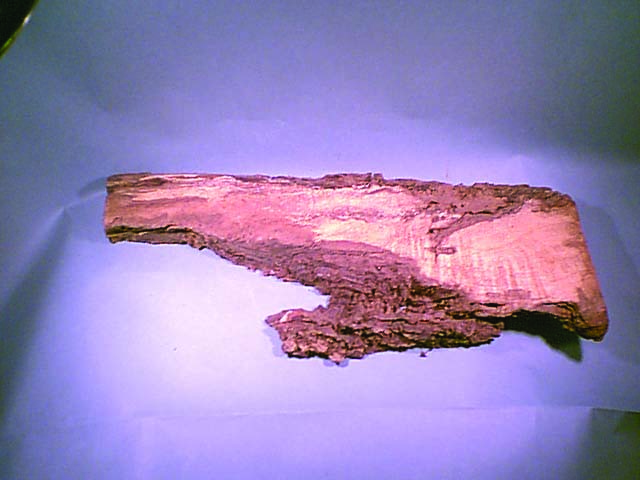Measure for Measure Among Blue And Gray
While Americans celebrate the sesquicentennial of the Civil War, the recent gruesome images of Western hostages being murdered by the so-called “Islamic State” only serve as a reminder that these kinds of atrocities are nothing new. In an effort to understand the senseless murder of the defenseless, we only need look to the brutal killings conducted by a detachment of Confederate Col. John S. Mosby’s forces near where Clarke County High School stands today.
These killings, in the foggy, pre-dawn hours of November 7, 1864, were committed in retaliation for the summary execution of six of Mosby’s troops in Front Royal, Va. earlier in the fall. However, it was not a random incident. This murder of innocent hostages, actually prisoners of war on both sides of the Gray and Blue divide, involved a series of larger events.
Soon after Mosby’s daring wagon-train raid at Berryville, on August 13, 1864, General Ulysses S. Grant drafted a letter to the new commander of the Army of the Shenandoah, General Phillip Sheridan, “The families of most of Mosby’s men are known and can be collected. I think they should be taken and kept at Fort McHenry, or some other secure place, as hostages for the good conduct of Mosby’s men. When any of Mosby’s men are caught, hang them without trial.” Why had Mosby, and a command that probably never exceeded 500 operatives at any given time, become such a potent threat to the supreme commander of U.S. armed forces?
Unbeknownst to Grant, this order would ignite a grisly duel that would develop over several months and only end with these killings in Beemer’s Woods. The principal antagonists in this hideous affair would end up pitting Mosby against an equally determined nemesis, Union Brigadier-General, George Armstrong Custer.
Origins of the Fight
“Mosby’s Rangers,” as they were commonly known, was an independent, guerrilla unit of General J.E.B. Stuart’s cavalry division, and at least on paper, members of the Army of Northern Virginia, officially known as the 43rd Battalion of the 1st Virginia Cavalry. According to Grant’s order, why were bona fide members of an enemy force not to be accorded the same respect and civilized treatment as other prisoners-of-war?
In February 1864, U.S. Grant was promoted to lieutenant-general by President Lincoln and placed in charge of all Union forces. Lincoln, who faced re-election in November, wanted to bring the ruinous Civil War to an end by the time political campaigning rolled around.
During the spring of 1864, one of the few weapons remaining for General Robert E. Lee was to prolong the war and inflict as much damage on Grant as possible.
By July, Grant had Lee locked under siege at Petersburg, Va. In an effort to relieve pressure on his embattled forces, Lee sent General Jubal Early, with a small army, to operate in the Shenandoah Valley with the intended purpose of making a demonstration against Washington. Early’s efforts succeeded when Confederates eventually skirmished with Federal forces at Fort Stevens at Silver Spring, Md., in the suburbs of the capital city. Once again, the wily Confederates had used the Valley to threaten Washington and invade the North. As they had throughout the war, Confederate generals continued to enjoy the luxury of being on the offensive in the Shenandoah Valley.
Grant realized that the Valley could only be swept clean of Confederates by using a massive concentration of cavalry. As a result, he replaced the feckless General David Hunter with Sheridan on August 6, 1864.
August 13: The Berryville Wagon-Train Raid
Sheridan didn’t have long for a honeymoon. Every day after he assumed command there were new reports of partisan rangers causing mayhem and threatening his supply lines and outposts.
Quickly moving his army south to Harpers Ferry, Sheridan prepared to advance against Early, who had positioned his army on the west bank of the Opequon Creek in an effort to defend Winchester. With Sheridan busily securing the fords on the Opequon, Early, uncomfortable with his position, retreated further up the Valley to a fortified location near Strasburg. Early’s withdrawal greatly increased the length of Sheridan’s supply and communication lines, thus making them more vulnerable to sniping guerrilla attacks.
On August 12, a giant Union supply train, numbering 525 wagons, left Harpers Ferry, guarded by nearly 3,000 troops, with orders to reach Winchester as speedily as possible. A herd of cattle plodding along at the rear of the column slowed its progress. The ever-watchful Mosby, meanwhile, gathered a small force to pounce on this succulent prize.
According to Virgil Carrington Jones, in his biography, Ranger Mosby: “Noise made by this great shipment of military supplies echoed for miles. It came as a throaty roar of thudding hoofs, squeaking leather and clattering metal. Mules brayed up and down the line . . . Officers and teamsters, threatening penalties, swore violently in a futile effort to make their charges move faster.”
At a place known as Buckmarsh, about a mile north of Berryville, each section paused to water the mules and give the guards and drivers a respite before continuing west toward Winchester.
As Mosby recalls in his memoirs, during the night of August 12, he crossed the Blue Ridge through Snicker’s Gap with 250 men and two mountain howitzers. (One howitzer broke down and had to be abandoned.) Mosby forded the Shenandoah River near Castleman’s Ferry and the command rested while John Russell, leading several scouts, went out to reconnoiter.
Knowing that he couldn’t take on the whole train, Mosby intended to attack the tail end. Before long the scouts returned, interrupting a well-deserved nap by men who had been in the saddle all night. Mosby’s account continues:
“The men sprang to their saddles. With Russell and some others I went on in advance to choose the best place for attack, directing Captain William Chapman to bring on the command. About sunrise we were on a knoll from which we could get a good view of a great train of wagons moving along the road and a large drove of cattle with the train. The train was within a hundred yards of us, strongly guarded, but with flankers out. We were obscured by the mist, and, if noticed at all, were doubtless thought to be friends . . . The howitzer was made ready. Richards with his squadron, was sent to attack the front; William Chapman and Glasscock were to attack them in the rear, while Sam Chapman was kept near me and the howitzer.”
According to Mosby, the signal shot, “knocked the head off of one of the mules.” Surprise and confusion reigned. With the guard temporarily routed, Mosby began directing the destruction of the 75 wagons his men had captured. As the sun rose on a new day, so did the smoke from wagons, supplies and anything else that Mosby’s command could not carry away. Mosby captured more than 200 prisoners, including seven officers, 500–600 horses and mules, nearly 200 beef cattle, and a cache of sundry valuable stores. However, an even grander prize eluded Mosby and his men. Unknown to them, a box containing $112,000 payroll was later recovered from the side of the road by returning Federals.
August 19: The Morgan’s Lane Fight
Following the Berryville Wagon-Train Raid, Mosby divided his command so that the Rangers could simultaneously strike Sheridan in more places. Keeping Companies A and B, Mosby rode off toward Charles Town, while Companies C, D, E were placed under Captain William Chapman who was ordered to continue operations around Berryville and Winchester.
Later, while crossing the Blue Ridge through Snicker’s Gap, a portion of Chapman’s men surprised a picket outpost of the Fifth Michigan Cavalry, part of Custer’s command. A brief exchange resulted in one Union cavalryman killed and several wounded and captured.
When informed early the next morning of the attack, Custer decided to teach the Rangers a lesson in an effort to protect his own men from what he considered to be uncivilized conduct. The flamboyant young general ordered two companies of the Fifth Michigan to burn several homes of prominent secessionists and suspected partisan supporters. The companies split into squads and spread out to perform their assignment. On the evening of August 19, a company of Rangers led by William Chapman approached the Valley from the east. The sight of burning houses and barns chilled their blood.
Chapman and his men soon arrived at the home of Colonel Morgan, now Hill and Dale Farm. The barns and outbuildings were already reduced to flames. The house had recently been torched by a party of Federals, who now stood back to admire their handiwork. Suddenly, they were viciously attacked by Chapman’s company. With a cry of “take no prisoners,” the Rangers began the systematic annihilation of their enemy, by the light of the recently set inferno.
A reporter from the New York Times wrote in dispatch sent from Berryville, on August 21: “Captain Drake, leaving the main part of the command under Lt. Allen in line near one house which had been fired, took a few men and proceeded to fire another house about 100 rods distant. While thus engaged 200 rebels suddenly emerged from a ravine and made a furious charge upon the force under Lt. Allen before due preparation could be made to receive them.”
The Federals broke and ran, but an unusual configuration of stone fences prevented the escape of many. Though badly outnumbered, a few tried to mount resistance before they were overwhelmed. Upon seeing the hopelessness of their situation, others tried to surrender. The Rangers made good on their promise to take no prisoners. In his book, Gray Ghosts and Rebel Raiders, Jones describes their last moments: “They hid behind the burning ruins, they crouched in the corners of fences, they begged for life, but their day of grace was past.”
On September 11, Mosby mentioned the Morgan’s Lane fight in a report to General Lee. According to James J. Williamson in his memoir, Mosby’s Rangers, “About 25 were shot for their villainy. About 30 horses were brought off, but no prisoners.”
September 23: Custer Executes Six Rangers At Front Royal
After being defeated at Winchester, Jubal Early retreated south of Strasburg to a somewhat fortified position on Fisher’s Hill. Sheridan, in an attempt to get behind the Confederate army, sent General Alfred T. A. Torbert with two brigades of cavalry up the Luray Valley. By evening of September 20, Early was again forced to retreat. The Union cavalry, however, did not fare so well, encountering stiff resistance from Confederate Fitz Lee’s horsemen. Following several unsuccessful charges, Torbert pulled back. During the course of the Union withdrawal, Sam Chapman, leading a detachment of Rangers, lurked in the mountains. Dividing his command, the Rangers struck at an ambulance train rolling through Chester Gap, near Front Royal.
Sam Chapman had approximately 120 men under his command at that time. While preparing for his part of the attack, Chapman realized that the train was guarded by a brigade of Union cavalry. Frantically, he tried to reach Captain Frankland, who commanded the other wing of the assault, to call off the attack. The warning arrived too late.
Chapman retreated through Chester Gap, hard pressed by Union cavalry. In a valiant effort to escape, the Rangers turned and counter-attacked, riding head-long into the enemy, hoping to cause as much confusion as possible to cover their escape. During the fight, a Union lieutenant named Charles McMaster was cut to pieces by bullets from the revolvers of frantic partisans. Rumor had it that Lieutenant McMaster had surrendered and that the rebels showed no mercy and gunned him down.
More hearsay swirled about. Union soldiers with their throats cut were supposedly lying beside the road; McMaster’s pockets were presumably robbed, while another Federal was found stripped to his underwear, hiding in a barn. As Jones reports in Gray Ghosts, “All implications involving feats that would seem scarcely possible in the heat and pressure of the moment.”
In reality, it appears that McMaster, whose horse had been shot out from under him, had been on the ground attempting to lead his men to cut off the partisans’ retreat. In the milieu, the Union officer had been trampled in the heat of the moment.
Upon viewing the body, Custer proved to be inconsolable. From Ranger Mosby, Jones reveals: “Derision hurt and ridicule disparaged. It was not within his power to lose gracefully in open battle, let alone in the small skirmishes of independent warfare. The repulse that morning at Milford had injured his pride; the sight of McMaster infuriated him, and in the back of his mind was the haunting memory of the house-burners he had sent to their death.”
Most of Chapman’s men got away from the debacle that could have gotten them all captured. However, six were captured and taken into Front Royal. Four of the rebel prisoners were shot and two were hanged on the main road entering Front Royal. On the chest of one man, the executioners fixed a sign, which read, “Such is the fate of all of Mosby’s gang.”
November 7: Mosby Executes Some of Custer’s Men at Berryville
While his men were being murdered in Front Royal, Mosby had been recuperating from a wound sustained in a separate action. By the time he returned to his command on September 29, Mosby had little time to contemplate revenge against Custer. Early had been routed. The remnants of his army awaited those few reinforcements coming his way in the area of New Market. Meanwhile, Mosby had his hands full sniping at Sheridan’s supply and communications lines.
In an effort to shorten his supply lines and make them less vulnerable to partisan attack, Sheridan made an attempt to reopen the Manassas Gap Railroad east of Front Royal. Mosby was equally determined to thwart the effort. Eventually, Sheridan gave up on the railroad since the partisans constantly harassed the construction crews, who required considerable guard, and ripped up track nearly as fast as it got laid.
For his part, Mosby never forgot the indignity and uncivilized treatment of his men at Front Royal. With winter fast approaching, and Early recently defeated at Cedar Creek, the partisan leader found a respite for retaliation.
At the end of October, while fighting over the Manassas Gap Railroad, Mosby had written to General Lee complaining about the barbarous Federal treatment of citizens within his theater of operation.
“I desire to bring, through you, to the notice of the Government the brutal conduct of the enemy manifested toward citizens of this district since the occupation of the Manassas road. When they first advanced up the road we smashed up one of their trains, killing and wounding a large number. In retaliation they arrested a large number of citizens living along the line . . . During the absence from my command, the enemy captured 6 of my men near Front Royal; these were immediately hung by order and in the presence of General Custer. They also hung another in Rappahannock. It is my purpose to hang an equal number of Custer’s men whenever I capture them.”
On November 2, General Lee endorsed Mosby’s proposed action with a letter to Mosby’s adjutant. A copy went to the Confederate Inspector’s General office: “I do not know how we can prevent the cruel conduct of the enemy toward our citizens. I have directed Colonel Mosby, through his adjutant, to hang an equal number of Custer’s men in retaliation for those executed by him.”
This letter proceeded up the chain of command through Adjutant General, H. L.Clay to Confederate Secretary of War, J. A. Seddon. On November 14, Seddon belatedly approved Mosby’s plan.
Meanwhile, at Rectortown, in Fauquier County, on November 6, Mosby’s command found themselves with 27 prisoners, some of whom belonged to Custer. Williamson recalls: “The 27 prisoners were drawn up in single line. Twenty-seven epics of paper, seven of which were numbered and the remainder blanks, being put into a hat and the hat shaken up, each prisoner was required to draw. The numbered pieces meant death by hanging, and the blanks Richmond and Libby Prison.”
A newsboy and a drummer boy were among the captured. The newsboy was summarily released. When informed that a drummer boy was among the condemned, Mosby ordered another drawing to find a replacement.
Then, with a squad under the direction of Lieutenant E. F. Thomson, the hostages were taken across the Blue Ridge through Ashby Gap where the group stopped in the town of Paris. Thomson had been ordered by Mosby to execute the men as close to Sheridan’s headquarters as possible.
Captain Montjoy, heading back to Fauquier from the Valley, also stopped at Paris for the night. Upon discovering that two of the condemned Union hostages were fellow Freemasons, Montjoy, being the ranking officer, immediately replaced them with two men from the prisoners he had taken in an earlier raid. The hostages were roped together to prevent their escape, but one, Private George Soule of the Fifth Michigan Cavalry, slipped his hands free and faded into the night.
Originally, Mosby had wanted the prisoners hanged on the Valley Pike near Winchester. But with dawn approaching and the party running behind time, Thomson decided to conduct the executions on the Winchester Pike outside of Berryville. According to Williamson, this was Beemer’s Woods, about 100 yards from what is now the Clarke County Ruritan Fairgrounds.
Three of the Federals were hanged before Thomson discovered that the Rebs hadn’t brought enough rope to finish the job. The other prisoners were allowed to kneel and pray before being shot. One prisoner apparently untied his hands and struck Thomson, knocking him to the ground, and disappeared into the darkness and mist of early morning. The remaining hostages were immediately shot. According to Williamson, the escapee climbed a tree where he remained until the Ranger party departed. Eventually, he made his way back to the Union army.
Pinned to the breast of one of the hanged men was a note from Mosby. “These men have been hung in retaliation for an equal number of Colonel Mosby’s men hung by order of General Custer at Front Royal. Measure for measure.”
Reconciliation, of a kind
On November 11, Mosby dispatched John Russell to Sheridan’s headquarters with a letter of reconciliation. In this missive, Mosby delineated numerous incidents of his humane treatment of hundreds of Federal prisoners processed by his command. He explained that the killings of Union prisoners was intended to avenge not only the six Rangers killed at Front Royal, but also one summarily executed in Rappahannock during actions centered around the Manassas Gap Railroad fight. Mosby closed by offering to cease atrocities.
“Hereafter any prisoners falling into my hands will be treated with the kindness due to their condition, unless some new act of barbarity shall compel me reluctantly to adopt a line of policy repugnant to humanity.”
Any further retribution, by Mosby, Sheridan, or Custer, ceased. Early’s army had been shattered at Cedar Creek, and with the onset of winter, retreated to a position below Waynesboro, never again to pose a threat to Union occupation. The wanton murder of hostages by both sides ultimately accomplished nothing.














